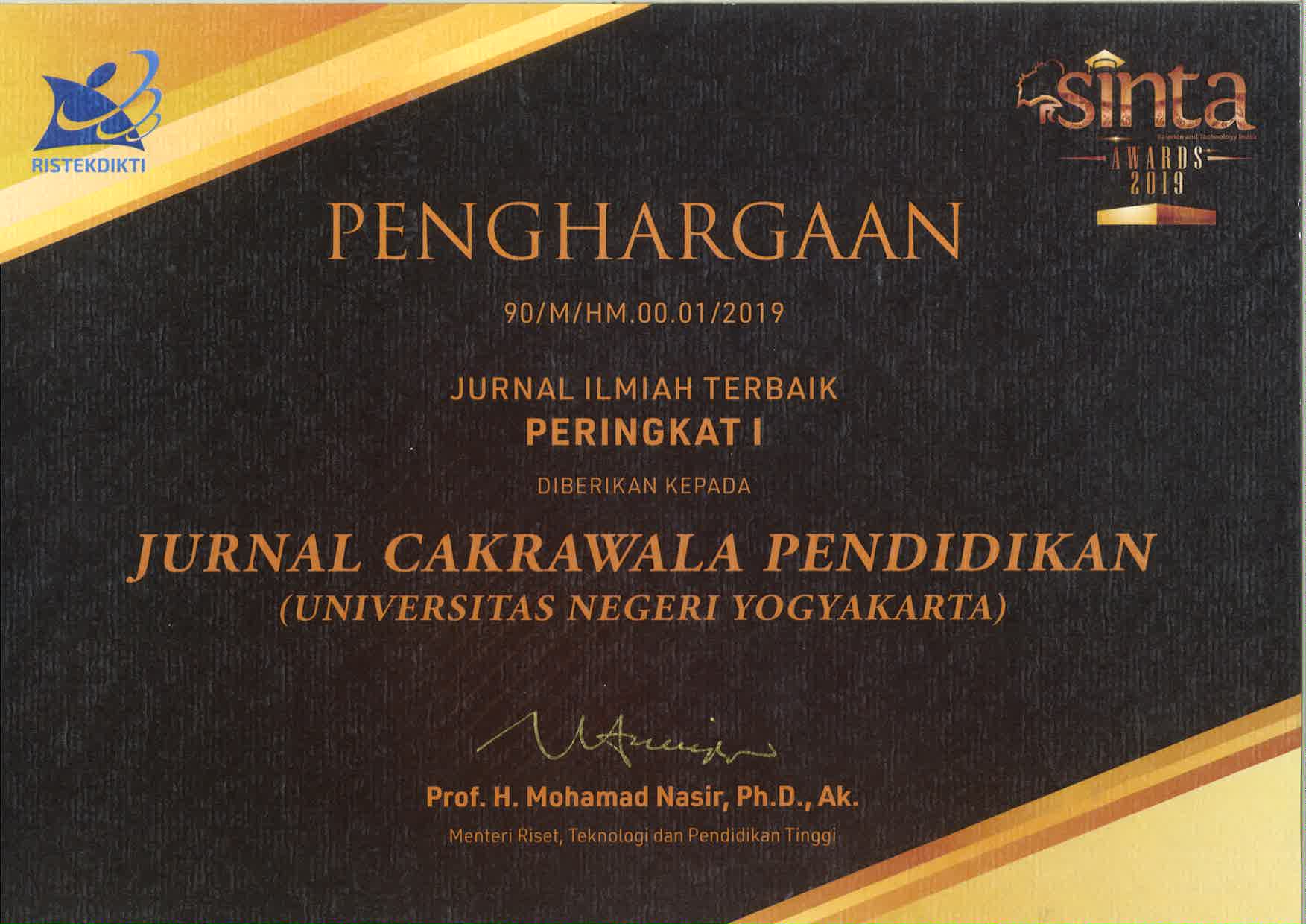COMPARISON OF EFFICIENCY SCHOOL PERFORMANCE BETWEEN NATURAL AND SOCIAL SCIENCES: A BOOTSTRAPPING DATA ENVELOPMENT ANALYSIS
Downloads
The main purpose of this study is to compare the efficiency performance of high school education in Indonesiabased on its specialization groups, namely natural and social sciences. This study uses secondary data of high school published by Ministry of Education and Culture of Republic of Indonesia in 2016 which covers general description such as the numbers of schools, students, teachers, graduates, classes, et cetera. This study uses a bootstrap approach that is applied in Data Envelopment Analysis (DEA) method, which compares the efficiency of each Decision Making Unit (DMU). To compare its efficiency, as many as 34 provinces are used as DMUs by using six input variables, namely the number of participants of national exam, students, schools, teachers, libraries, and the number of classrooms. The output variables are the number of graduates, the average score of national exam in Indonesian, English, and mathematics.The results indicate that all provinces have very good performance in organizing high school education for both natural and social sciences where the average efficiency scores of the traditional DEA are .99 and .98 for natural and social sciences, respectively. Meanwhile, its average scores from bootstrapped DEA are .98 and .96 for natural and social sciences, respectively. The empirical results also reveal that bootstrapped DEA provides better accuracy of efficiency scores than the traditional DEA. Overall, the provinces in Indonesia have better performance in organizing natural science than social science.
Downloads
Banker, R. D., Charnes, A., & Cooper, W. W. (1984). Some models for estimating technical and scale inefficiencies in data envelopment analysis. Management Science, 3(9), 1078-1092. doi:10.1287/mnsc.30.9.1078.
Ben-Tal, A. & Nemirovski, A. (2000). Robust solutions of linear programming problems contaminated with uncertain data. Mathematical Programming, 88(3), 411-424. doi:10.1007/PL00011380.
Bertsimas, D. & Sim, M. (2003). Robust discrete optimization and network flows. Mathematical Programming, 98(1), 49-71. doi:10.1007/s10107-003-0396-4.
Charnes, A., Cooper, W., & Rhodes, E. (1978). Measuring the efficiency of decision making units. European Journal of Operational Research, 2(6), 429–444. doi:10.1016/0377-2217(78)90138-8.
Cooper, W. W., Huang, Z. M., Lelas, V, Xi, S. & Olesen, O. B. (1998). Chance constrained programming formulations for stochastic characterizations of efficiency and dominance in DEA. Journal of Productivity Analysis, 9(1), 53-79. doi:10.1023/A: 1018320430249.
Escardibul, J. & Calero, J. (2013). Two quality factors in the education system: teaching staff and school autonomy. The current state of research. Regional and Sectoral Economic Studies, 13(3), 1-14.
Efron, B. (1979). Bootstrap methods: Another look at the Jackknife. Annals of Statistics, 7(1), 1-26. doi:10.1214/aos/1176344552.
Farrell, M. J. (1957). The measurement of productive efficiency. Journal of the Royal Statistical Society Series, 120(3), 253-290. doi:10.2307/2343100.
Fatimah, S. & Mahmudah, U. (2017). Data Envelopment Analysis (DEA): Pengukuran efisiensi kinerja sekolah dasar. Cakrawala Pendidikan, 37(2), 233-243. doi:10.21831/cp.v36i2.11511.
Gharakhani, M., Kazemi, I., & Haji, H. H. (2011). A robust DEA model for measuring the relative efficiency of Iranian high schools. Management Science Letters, 1(3), 389–404. doi:10.5267/j.msl.2011.01.002.
Gstach, D. (1998). Another approach to data envelopment analysis in noisy environments: DEA+. Journal of Productivity Analysis, 9(2), 161-176. doi:10.1023/A: 1018312801700.
Mahmudah, U. Suhartono, & Rohayana, A. D. (2018). A robust data envelopment analysis for evaluating technical efficiency of Indonesian high schools. Indonesian Journal of Science Education, 7(1), 114-121. doi:10.15294/jpii.v7i1.9883.
RoI, Ministry of Education and Culture. (2016). Statistik Sekolah Menengah Atas (SMA) 2015/2016. Center for Educational Data and Statistics and Culture 2016. Retrieved from http://publikasi.data.kemdikbud.go.id/uploadDir/isi_583FC30B-53E3-42F5-88EB-940540BB8E5A_.pdf.
RoI, Ministry of Education and Culture. (2016). Nilai rata-rata sekolah UN. Retrieved from https://data.go.id/dataset/nilai-rata-rata-sekolah-un.
RoI, Ministrial Regulation of Education and Culture 2013. No. 69, Basic Framework and Curriculum Structure.
Silverman, B. W. (1986). Density estimation for statistics and data analysis. London: Chapman and Hall Ltd.
Simar, L. & Wilson, P. W. (1998). Sensitivity analysis of efficiency scores: How to bootstrap in nonparametric frontier models. Management Science, 44(1), 49-61. doi:10.1287/mnsc.44.1.49.
Thanassoulis, E., Dyson, R. G., & Foster, M. J. (1987). Relative efficiency assessments using data envelopment analysis: an application to data on rates departments. Journal of Operational Research, 38(5), 397-412. doi:10.2307/2582729.
Jurnal Cakrawala Pendidikan, Jurnal Ilmiah Pendidikan, with ISSN: 0216-1370, is published by the Institute of Education Development and Quality Assurance (LPPMP UNY). Cakrawala Pendidikan has been recently has been re-accredited by Indonesian Ministry of Education and Culture decision Number 230/E/KPT/2022 which is valid for five years since enacted on 30 December 2022.




























